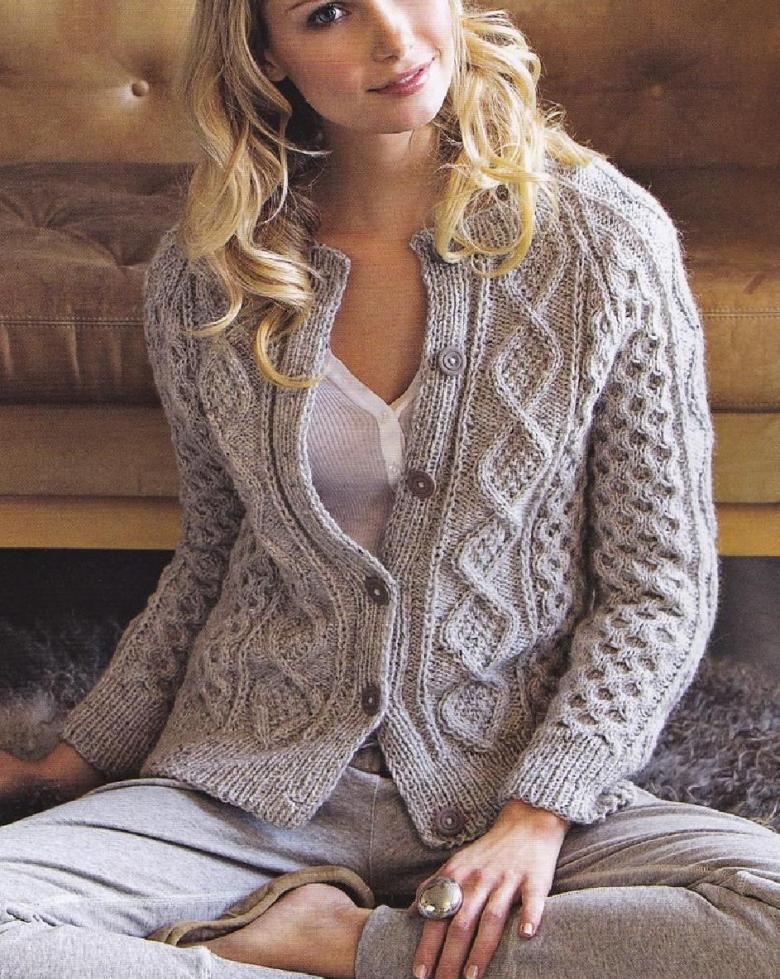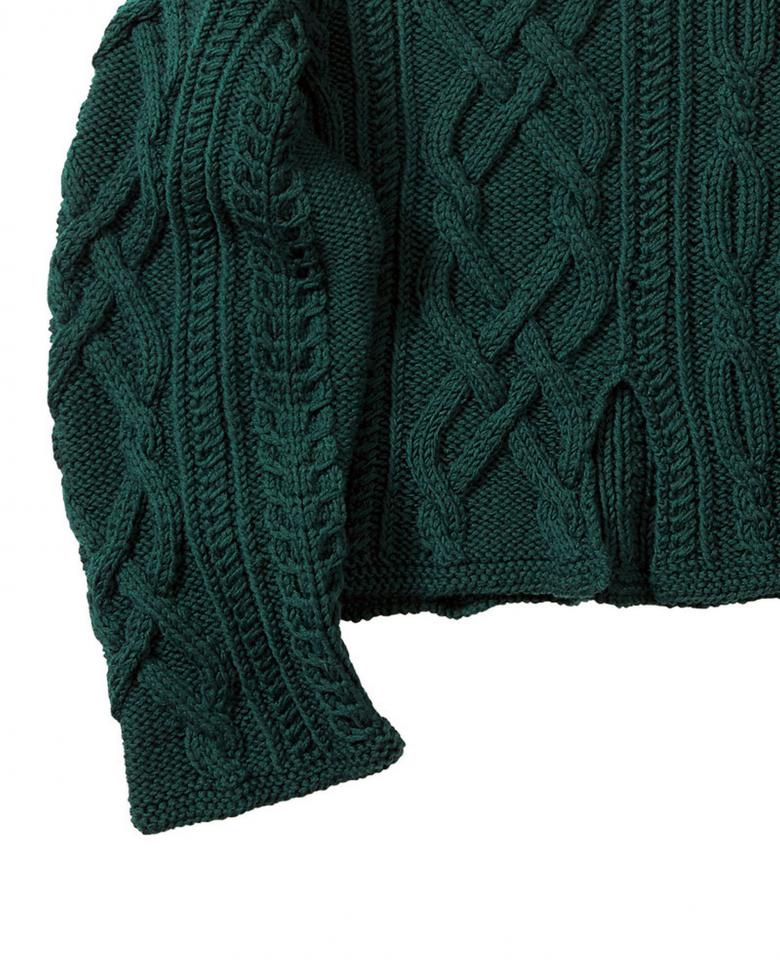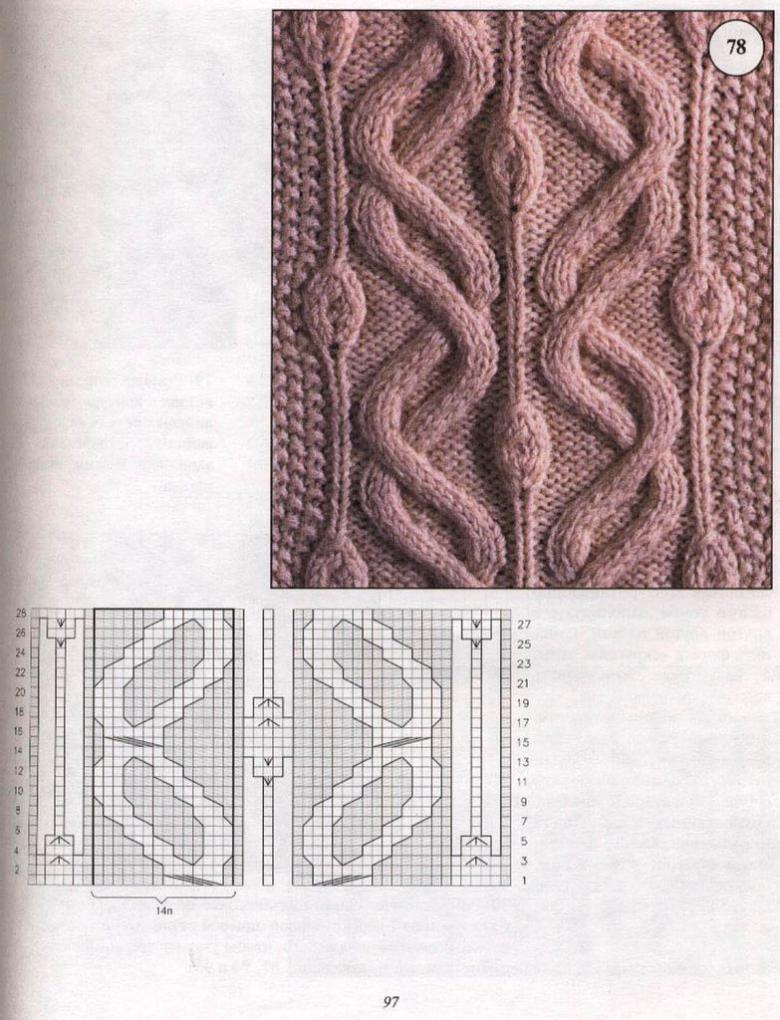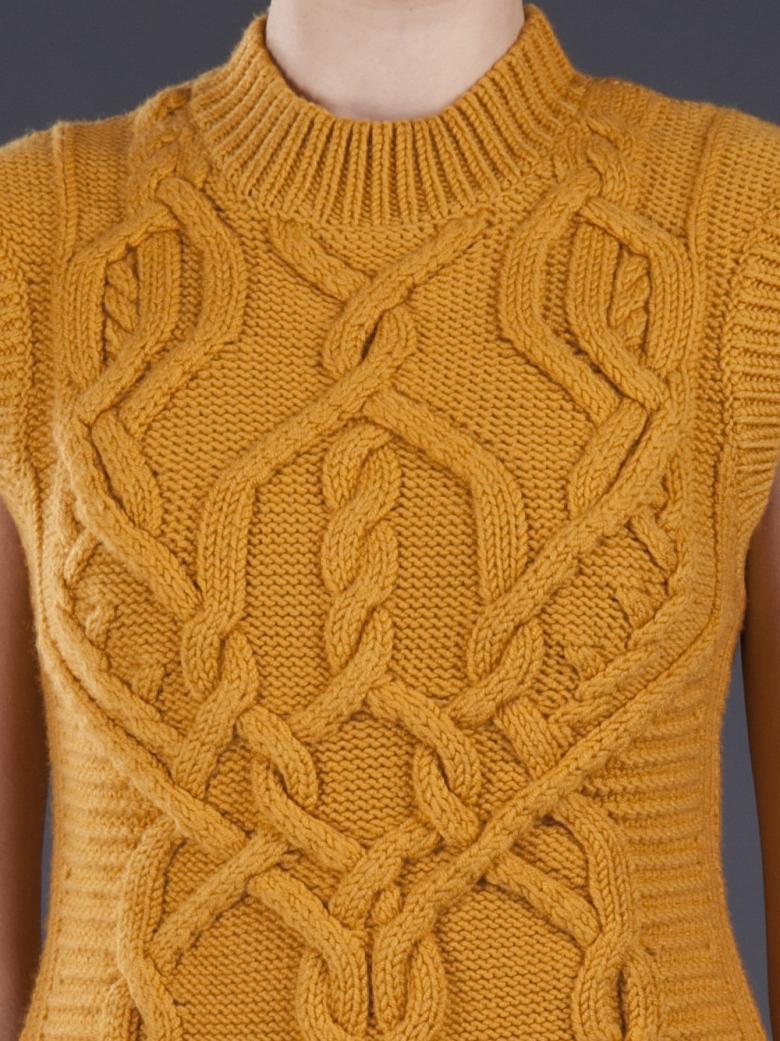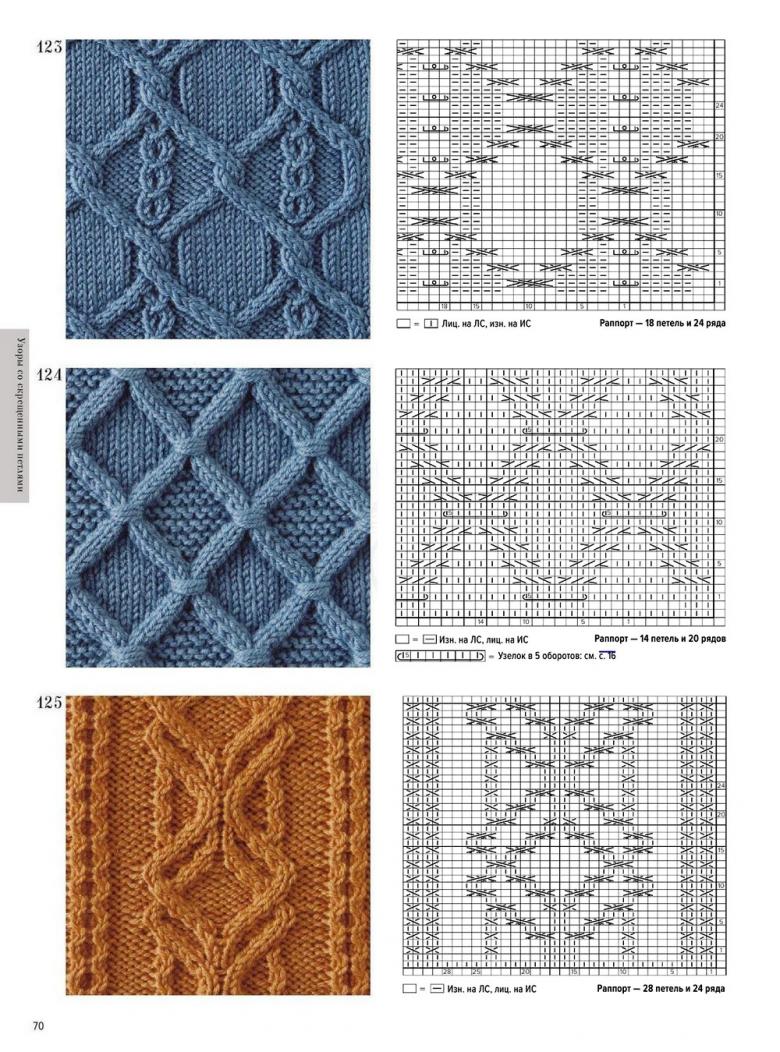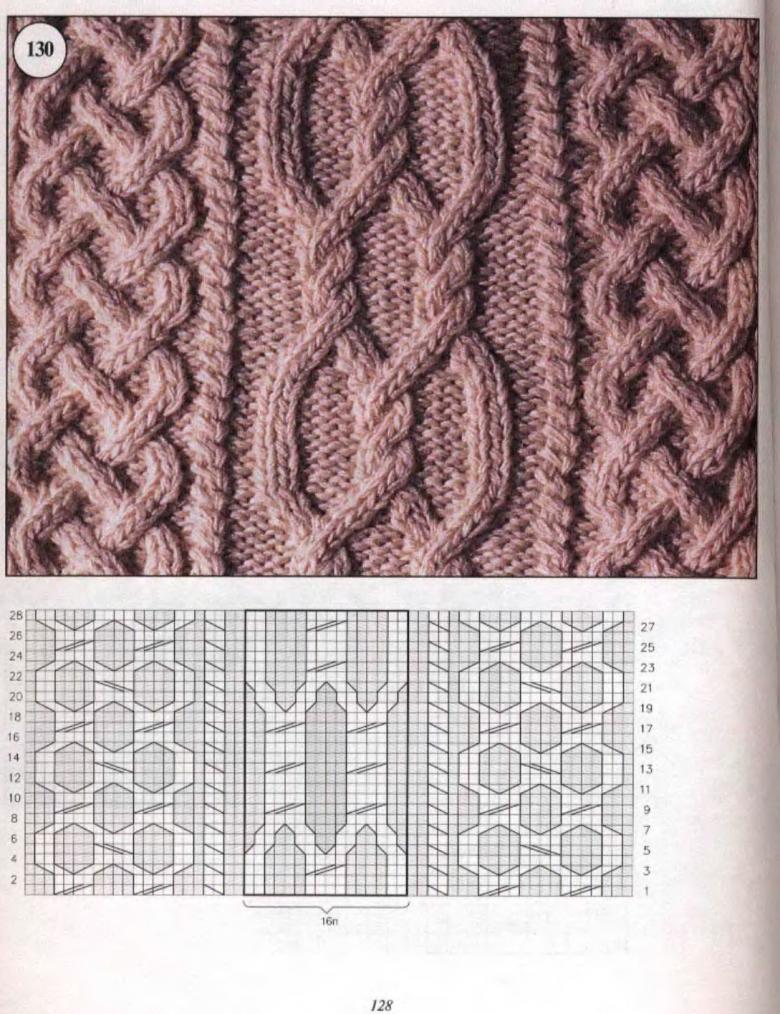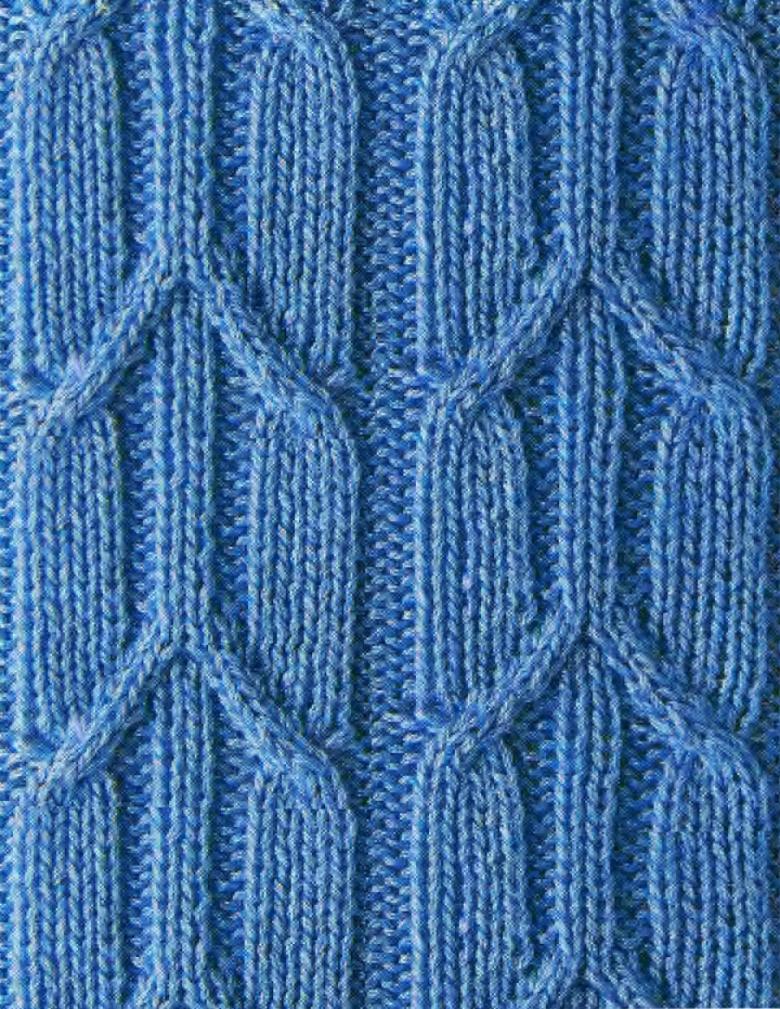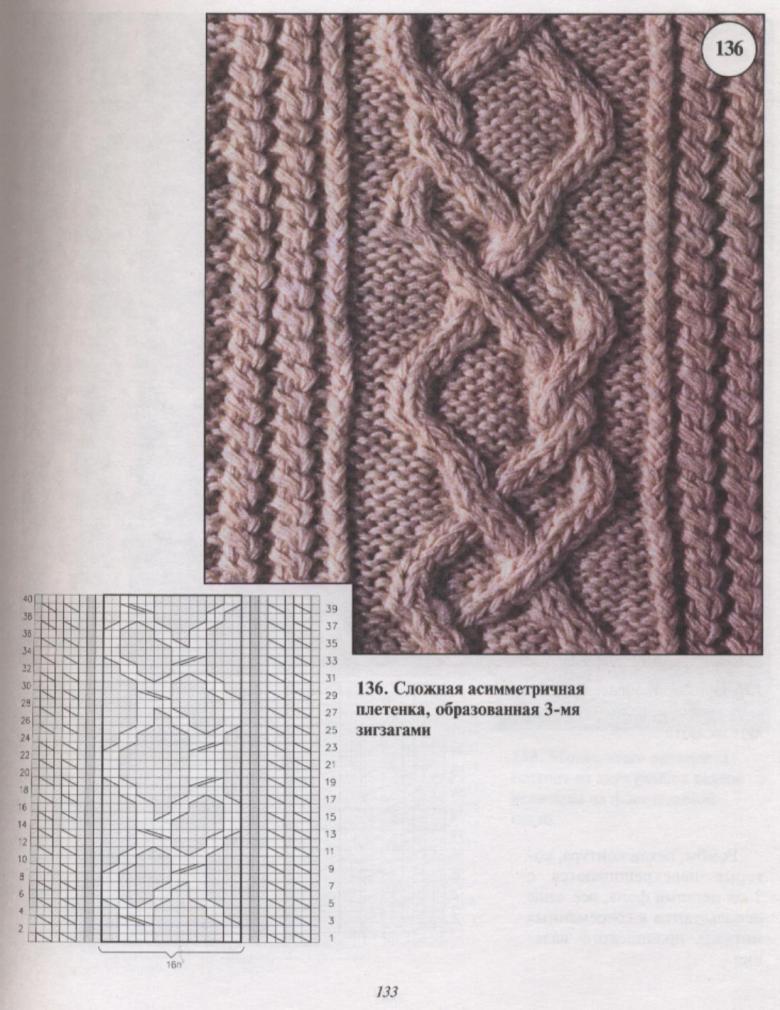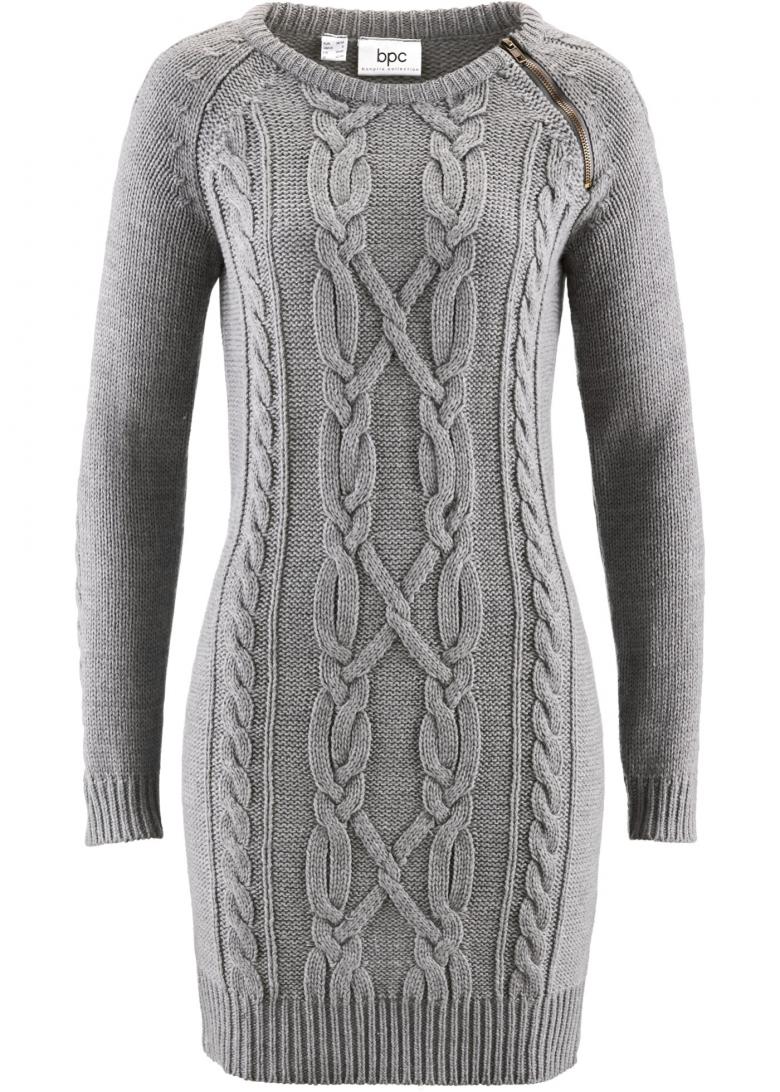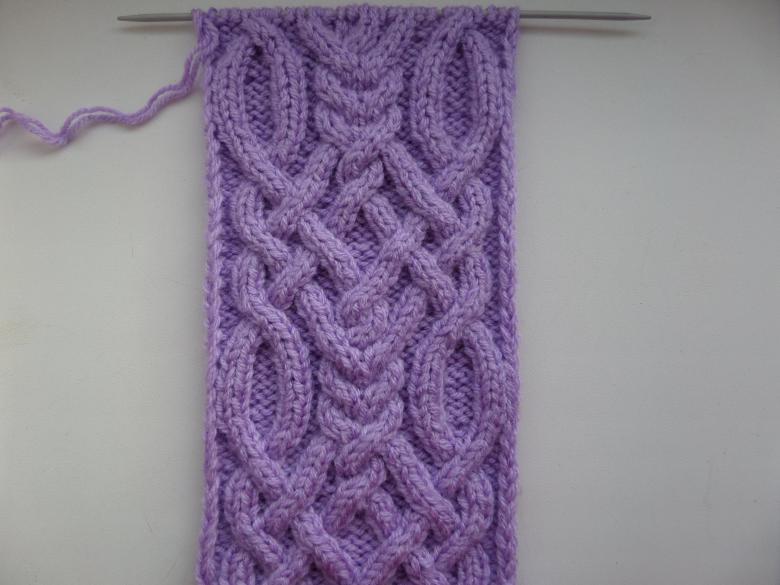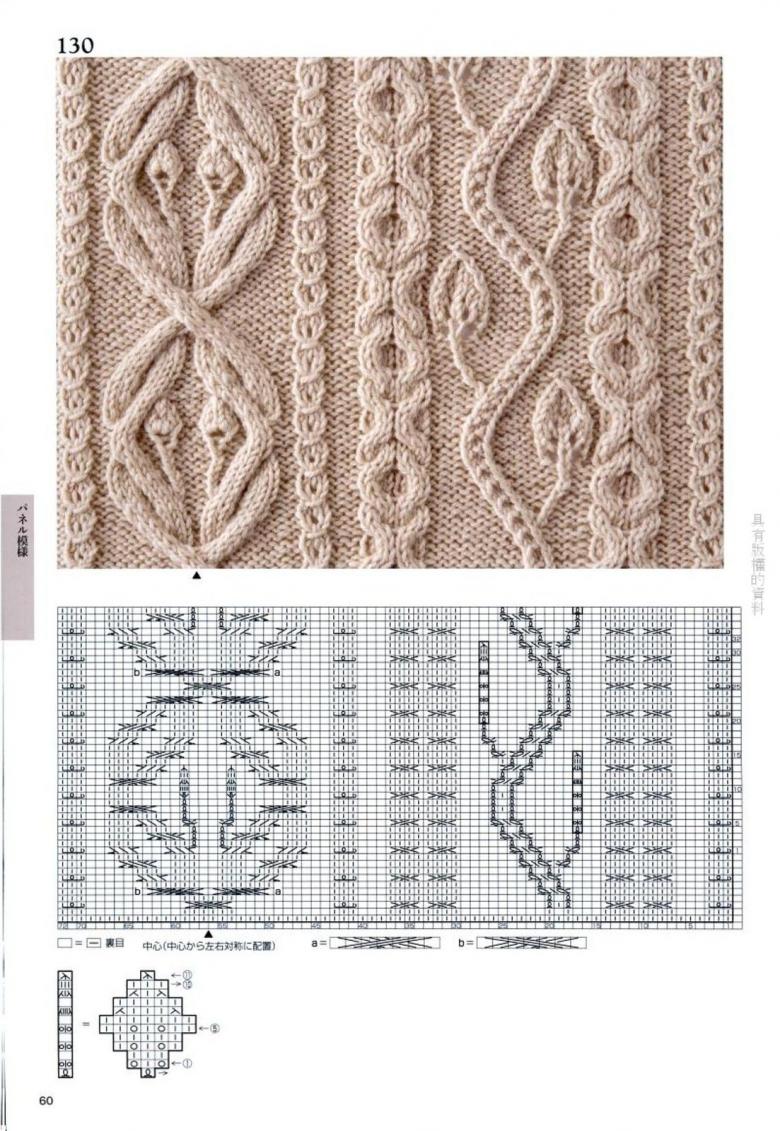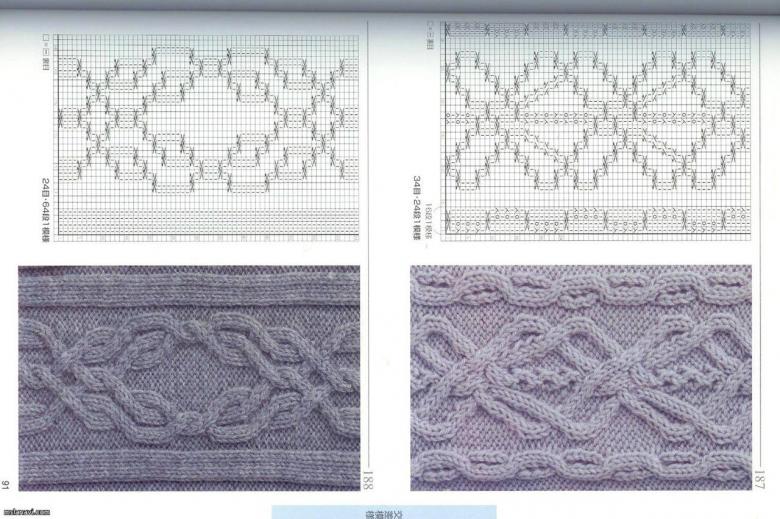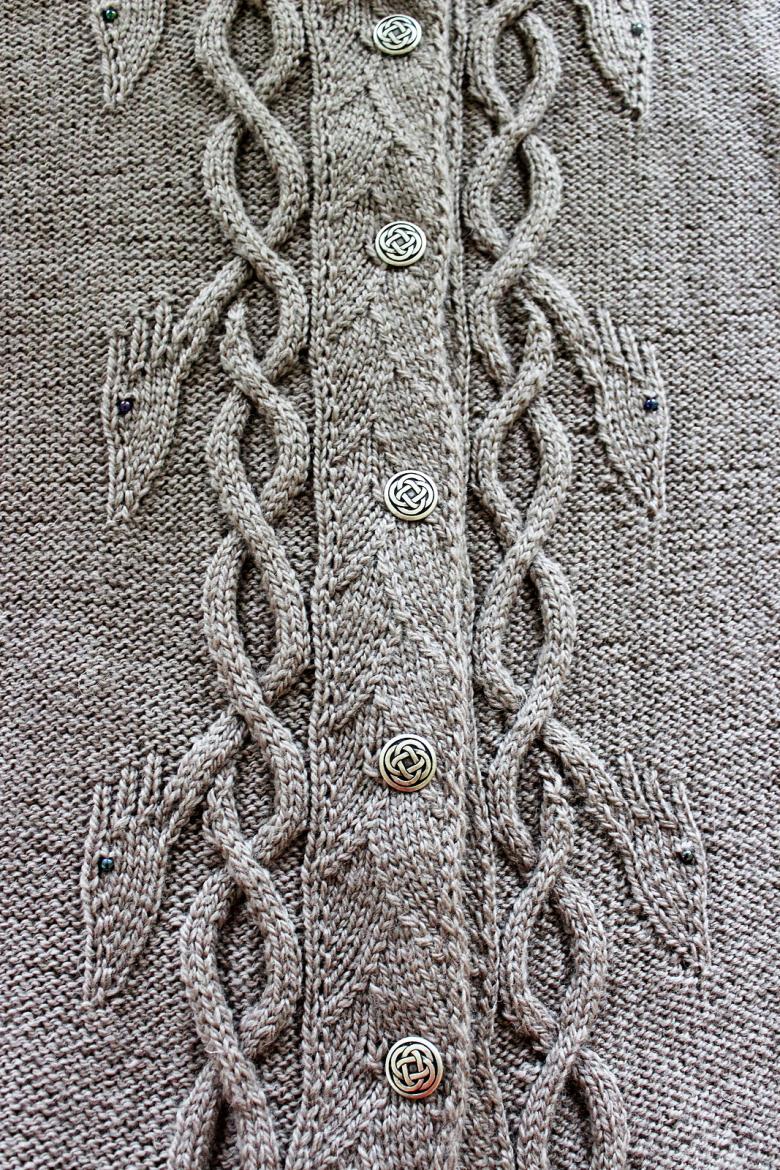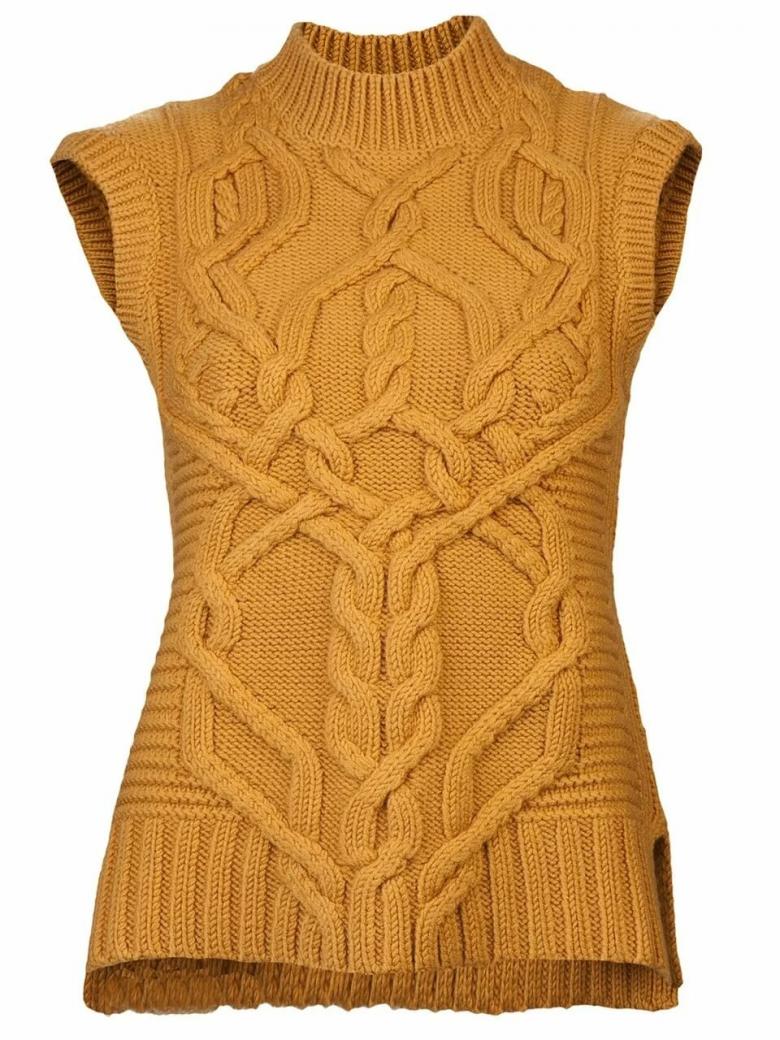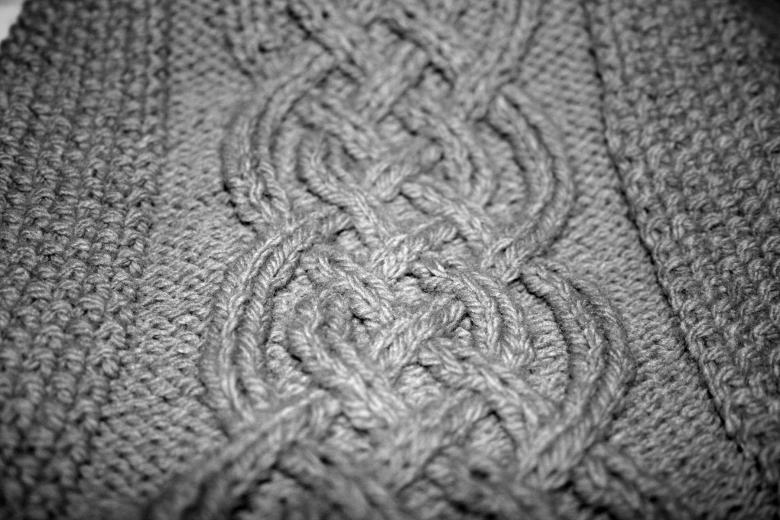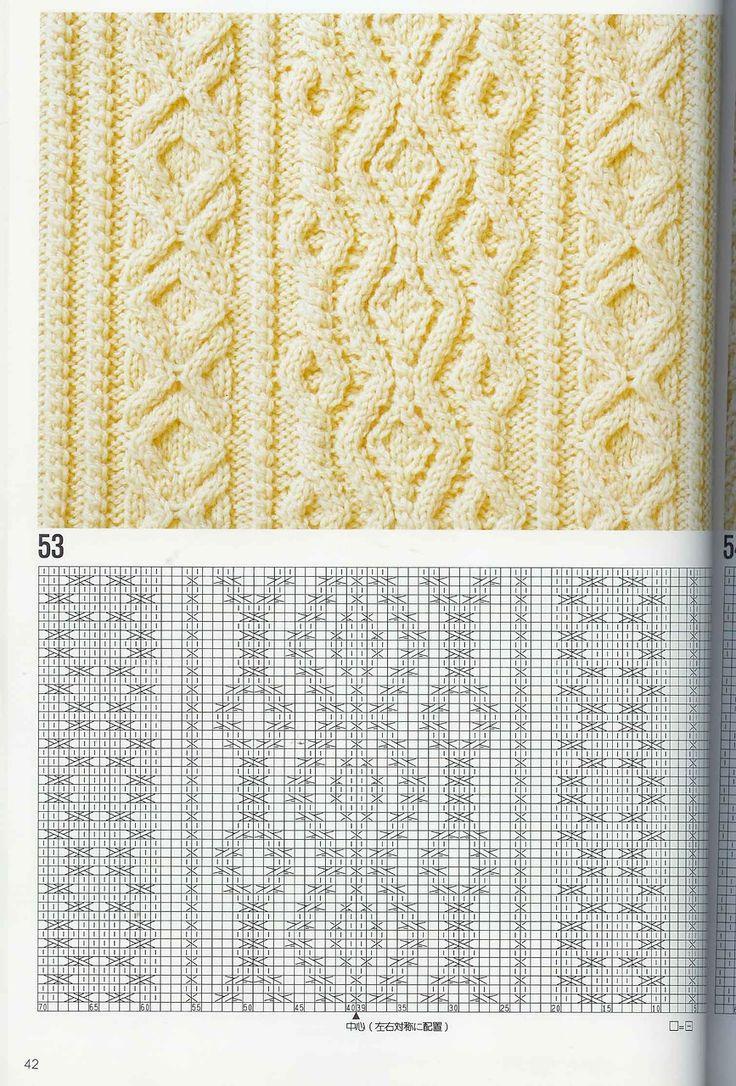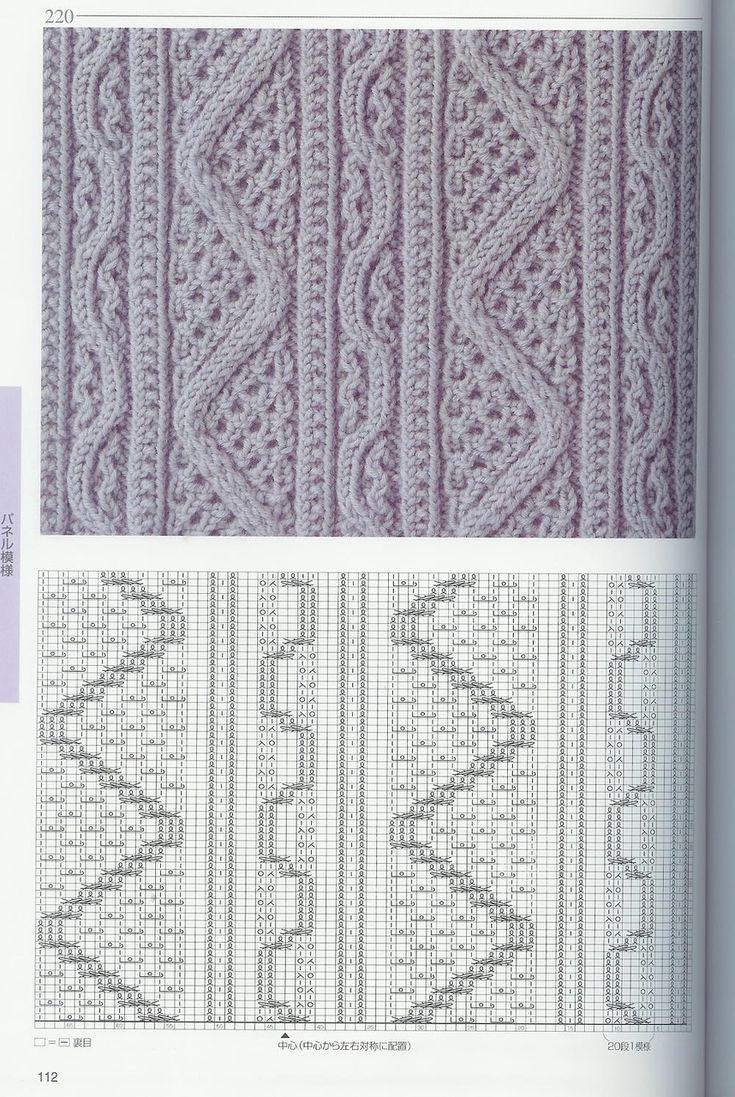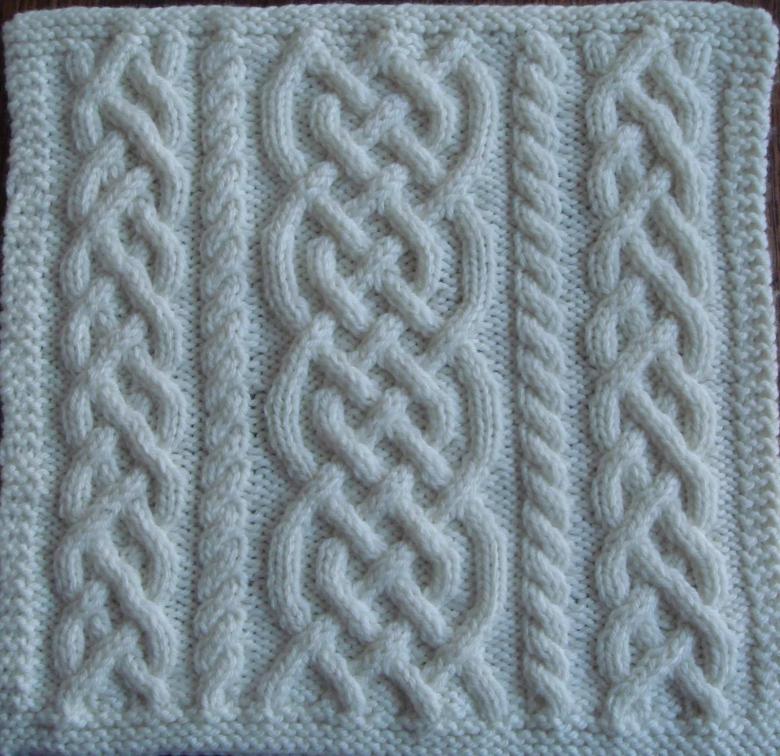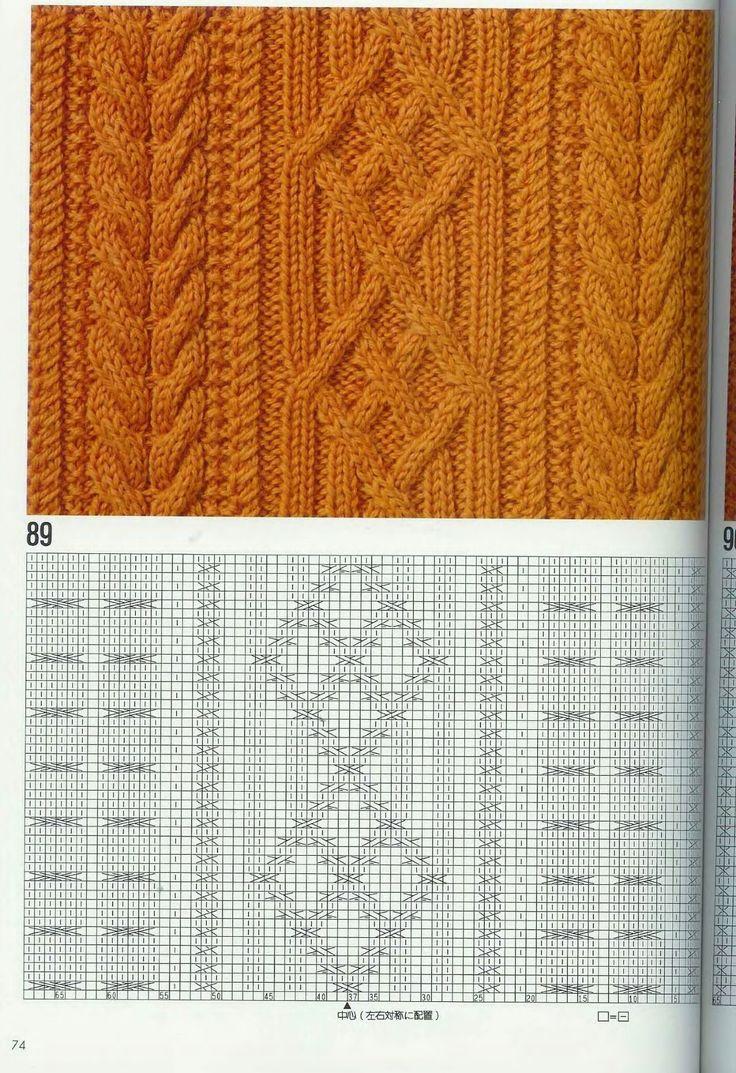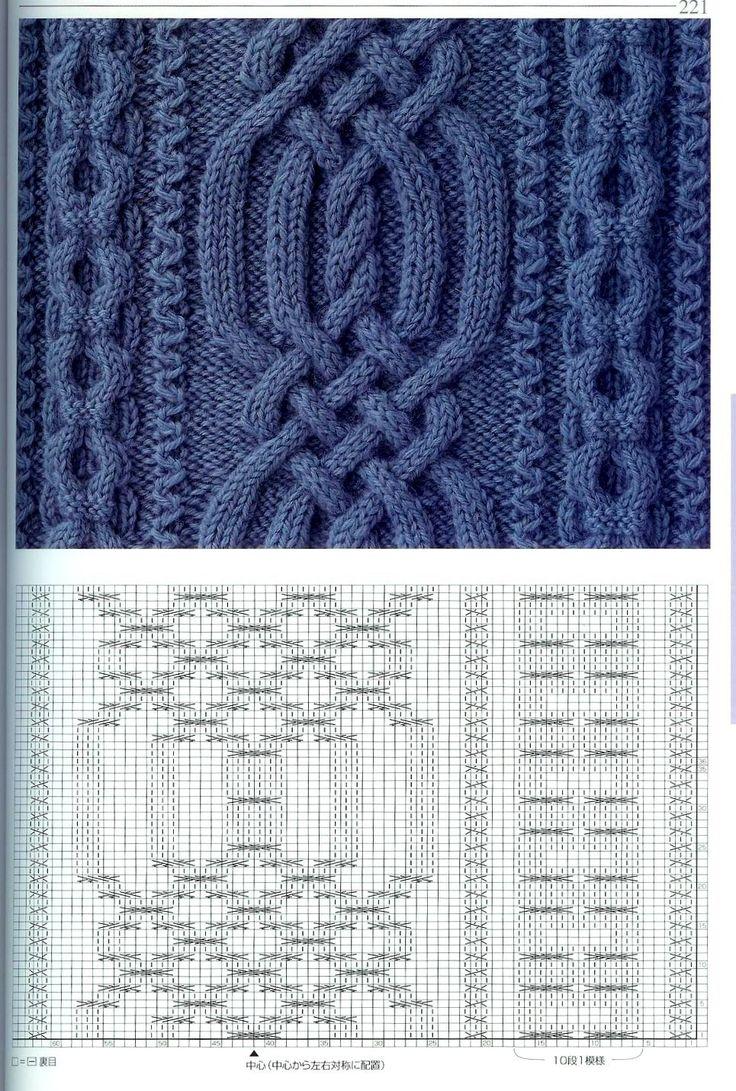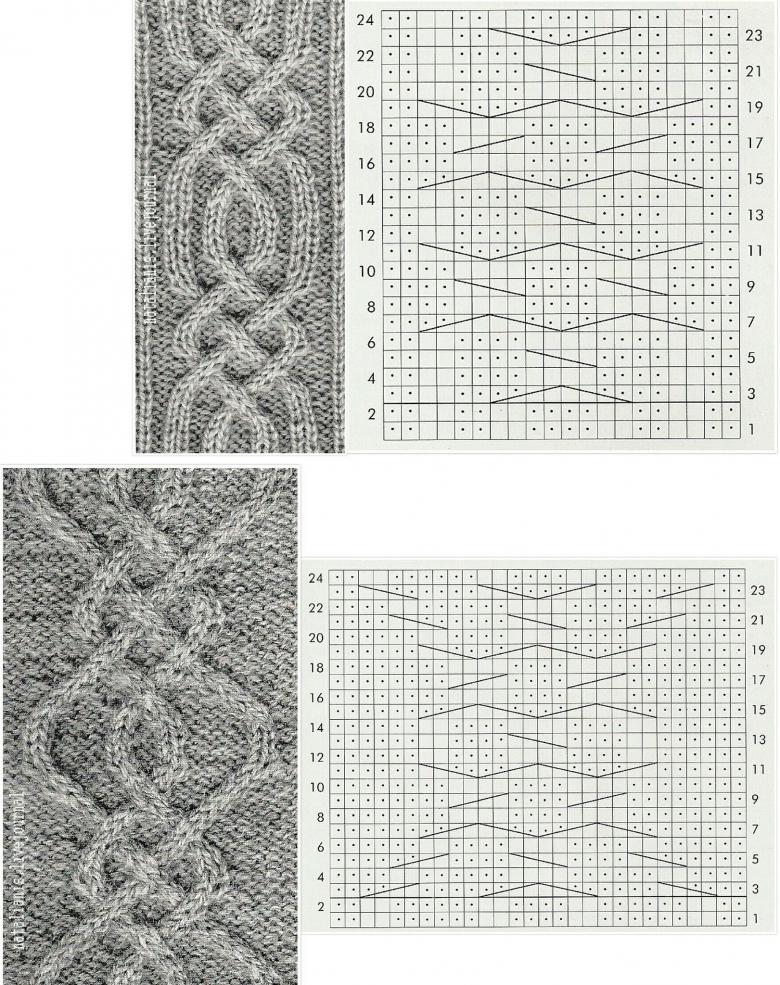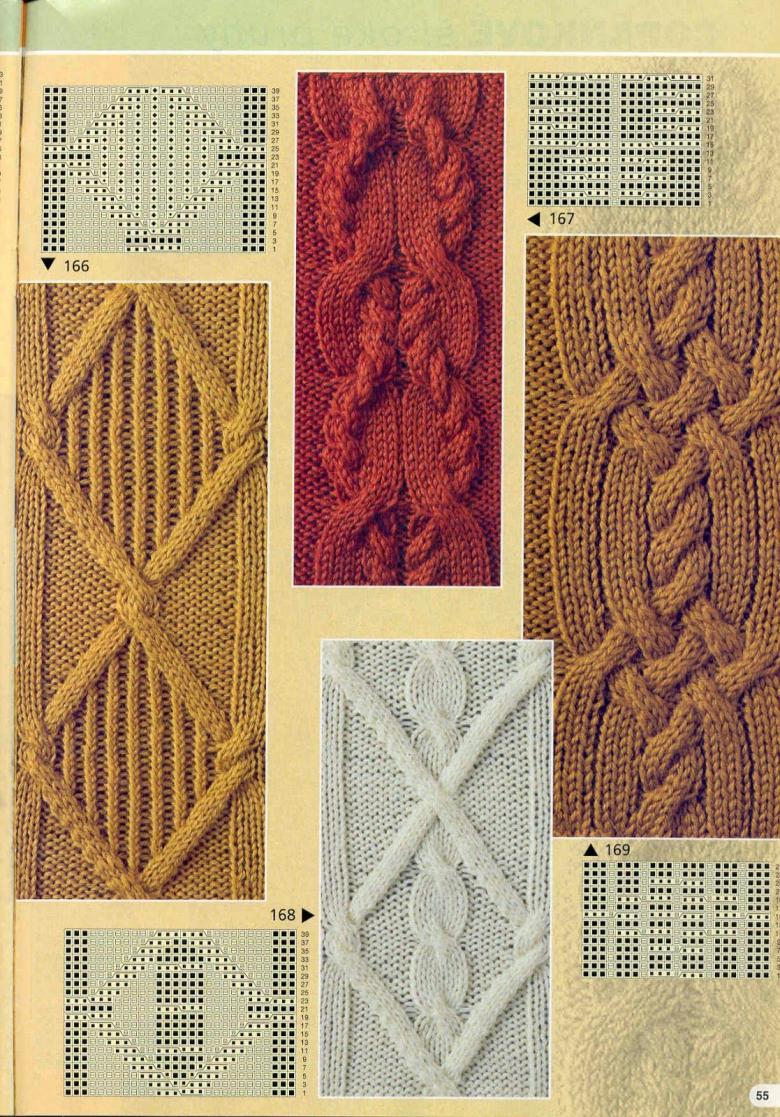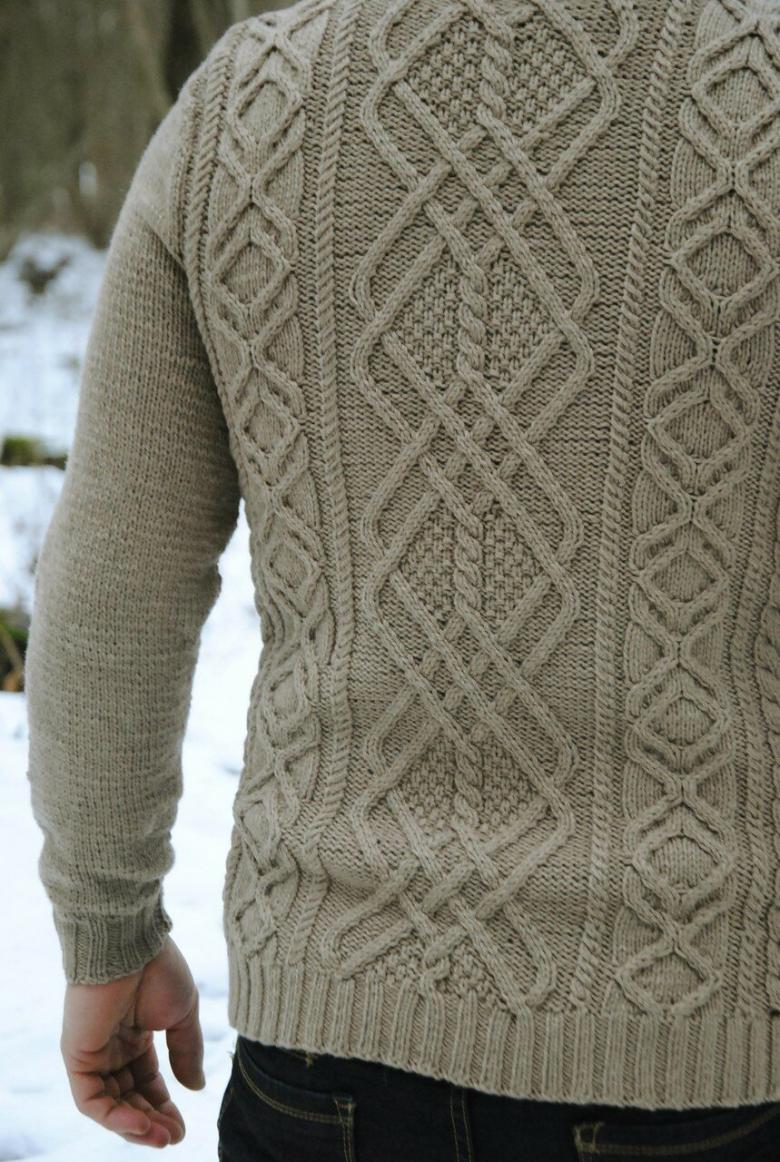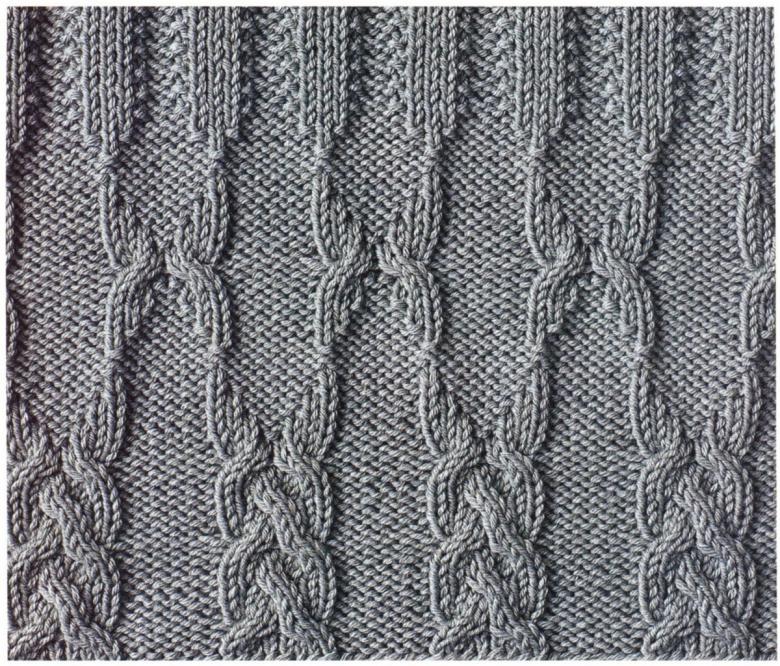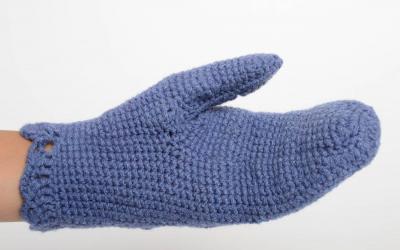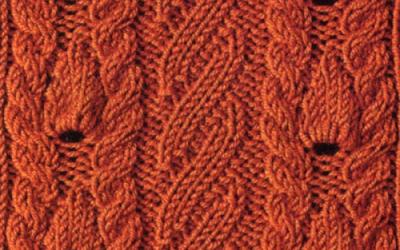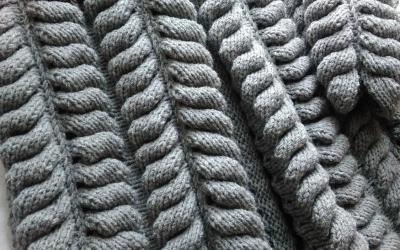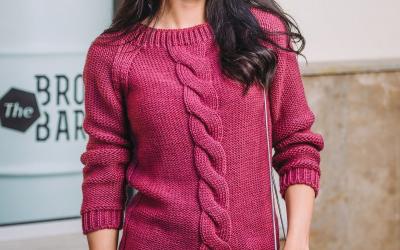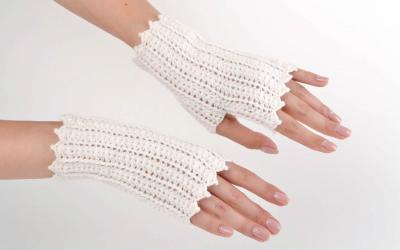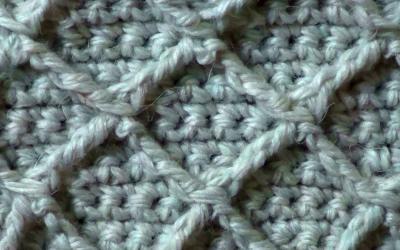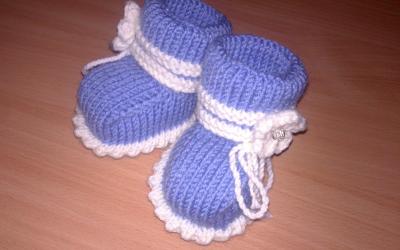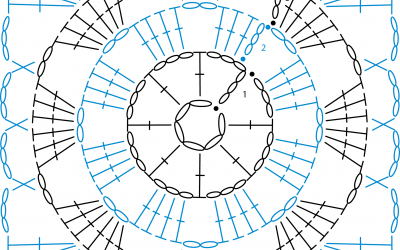Crocheting aran - description of crochet patterns, photo ideas. tips
Aran knitting style appeared long ago, in the fishing villages of the island of Ireland. The main feature is the dominance of braids, harnesses. The cut can be anything, but most often it is a comfortable, practical clothing. Photos of models for weekdays and holidays invite not to sit idly by, to master a new technique, to knit something for yourself as soon as possible.
Classic Celtic braid
The Celtic braid consists of plaits, knit by the front, intertwined at a small distance from each other. In between are the seamy ones, which are not found in other braid variations. They look like strands of rope, skillfully woven together.
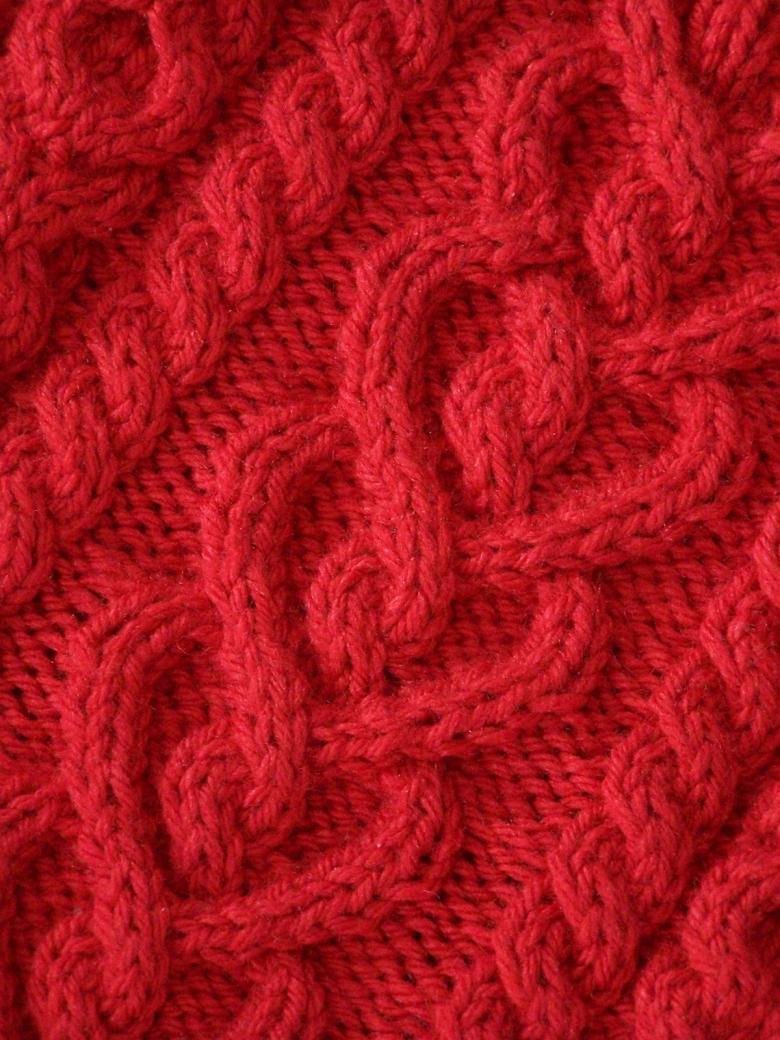
Knitting scheme:
- Minimum rasp of 25 p. - always a multiple of 10, plus 5 to offset the harnesses to the sides. Also add the two stray stitches.
- In the first row, you must do 3 faces, *then 4 in, 6 in, 4 in, 6 out,* 2 in.
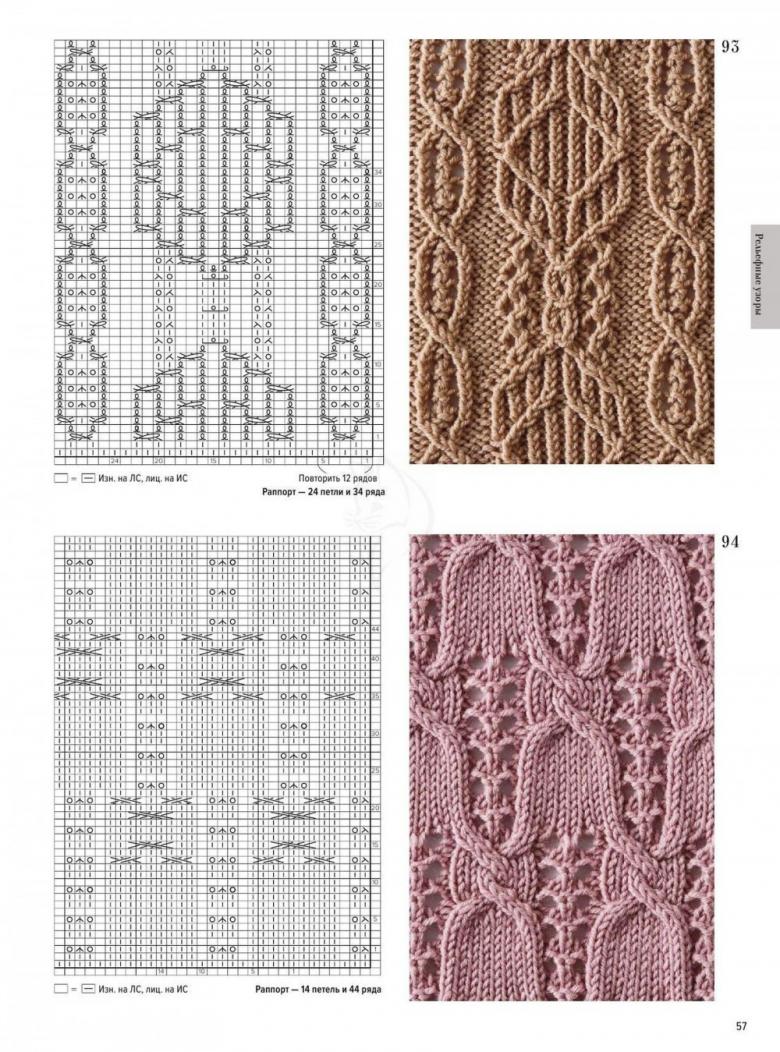
To increase the number of braids, if, for example, they are planned to decorate the whole piece, or you want to create a wider stripe for contrast, repeat the fragment from * to *.
- 2nd row according to the position of the loops on the spokes.
- 3rd - 3 faces, *4 in, then 3 stitches transferred to an auxiliary needle or pin. Leave them on the right side of the fabric. Knit the next 3 loops on the right side and move back those that are left. They are also knit on the right side. The piece is repeated *. Finish the row with two left-handed and a crochet stitch.
- 4th - 2 sts, 6i, 4 sts, 6i, 4 sts, 3i.
- 5th - *3 sts. remove to a pin, place it on the outside of the piece. Knit 2 sts to the wrong side, return the removed stitches and knit them to the right side of the stitches. Then remove 2 sts on the pin, leave them on the wrong side. Followed by 3 obverse stitches. Then return the deleted stitches, turn them to the wrong side*, repeat the fragment.
- 6th rt. - 3i., * 4l., 6i., 4l., 6i.* 2 l.
- 7th - 2 i., *3 sts. removed on a pin, leave behind the fabric. The piece continues 3. Carry back the removed stitches, and knit them to the right. They are followed by 4i.*. The fragment is duplicated, complete the row 3l.
- 8th as 6th.
- 9th rt. - *2 sts. postponed to the pin. Leave them behind the fabric, 3l., return the unknitted on the needle to turn them to the wrong side. Put aside 3 sts, placing them on the outside of the piece, knit 2i. Move them back, knit them to the front*.
- The 10th is similar to the 4th.
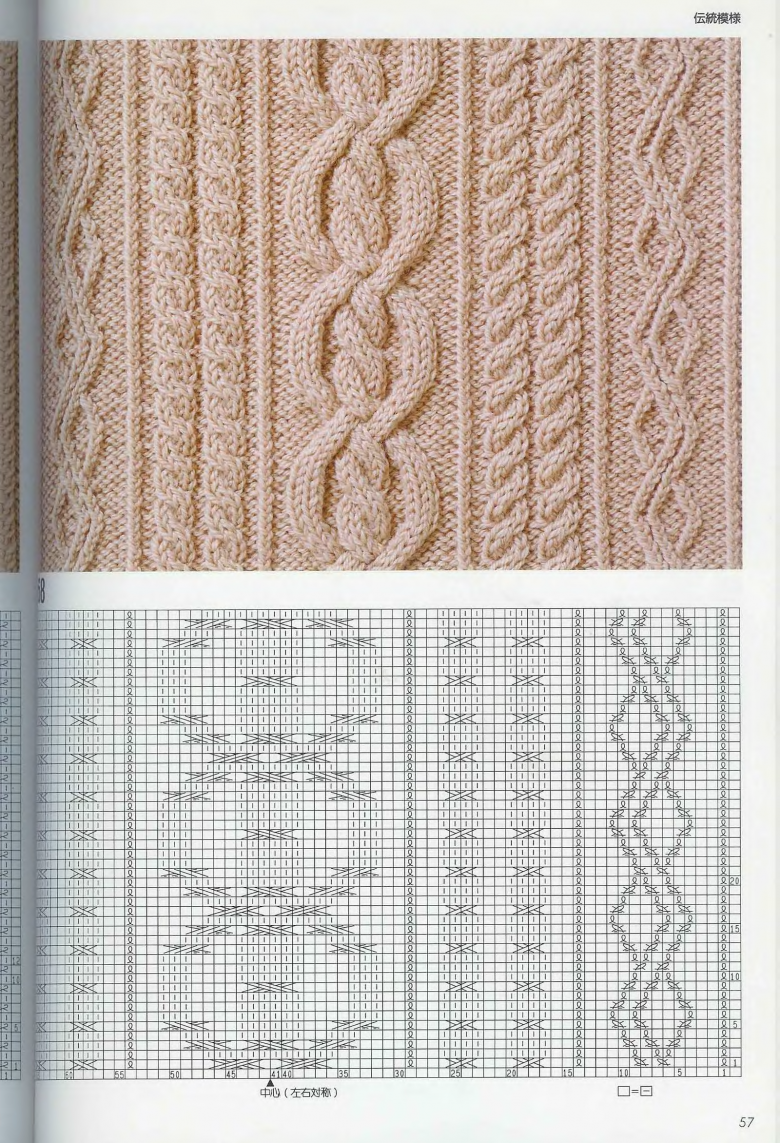
This is the most popular version of the pigtail. The pattern can cover the entire canvas or just part of it. Usually the aranas are placed in the center. It is customary to knit several of their varieties at once, to create an ensemble. This arrangement makes it easier to calculate the number of loops for each piece.
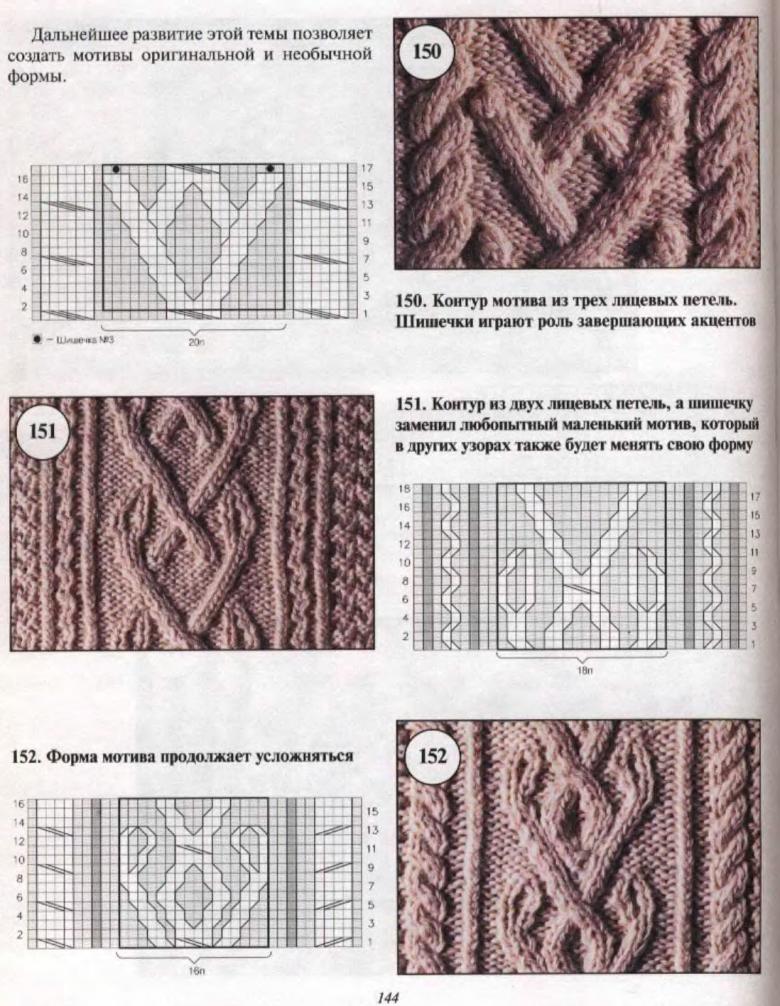
If there is more than one and all of them are different, there will be an avant-garde scarf, sweater, sweater or other thing in the closet. Asymmetrical braids are also one of the classic patterns of this style. Having learned to knit it and the Celtic braid, you can not be afraid of more complex schemes, braids with many threads and intertwining.
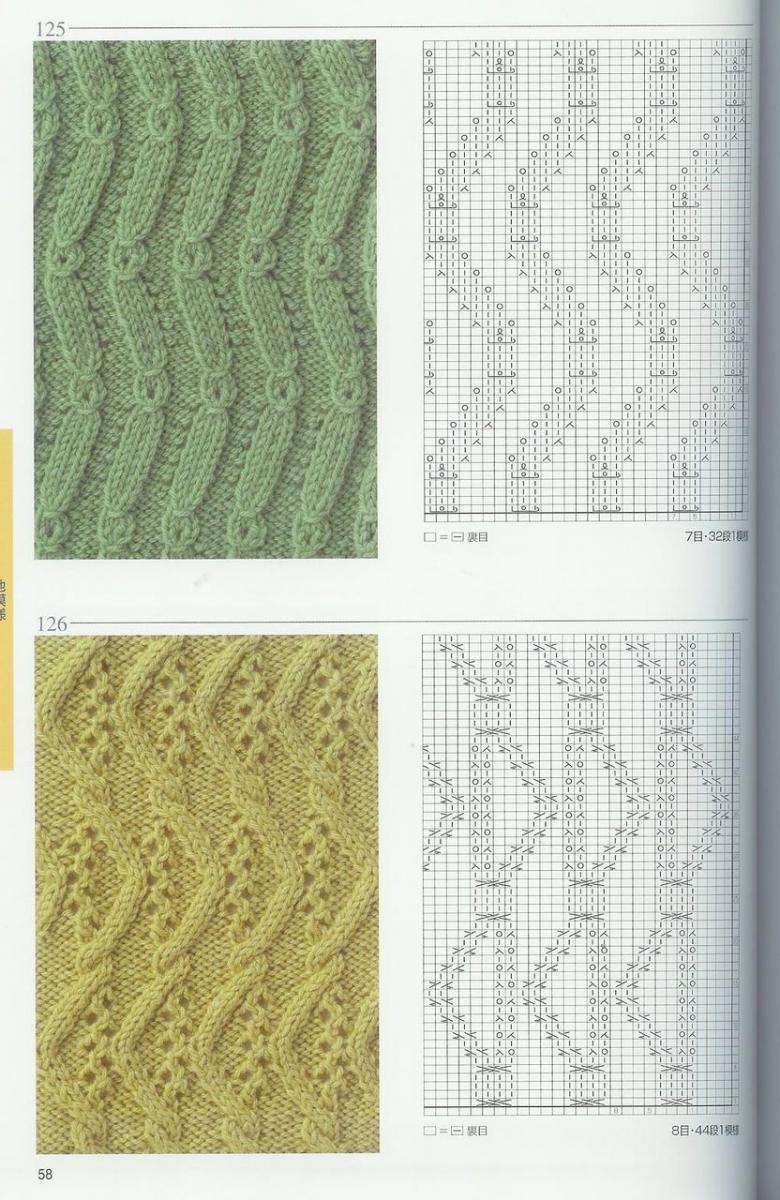
Asymmetric braid
The rasp consists of 18 p. To the total add 2 edge and 3 loops to give the pattern completeness.
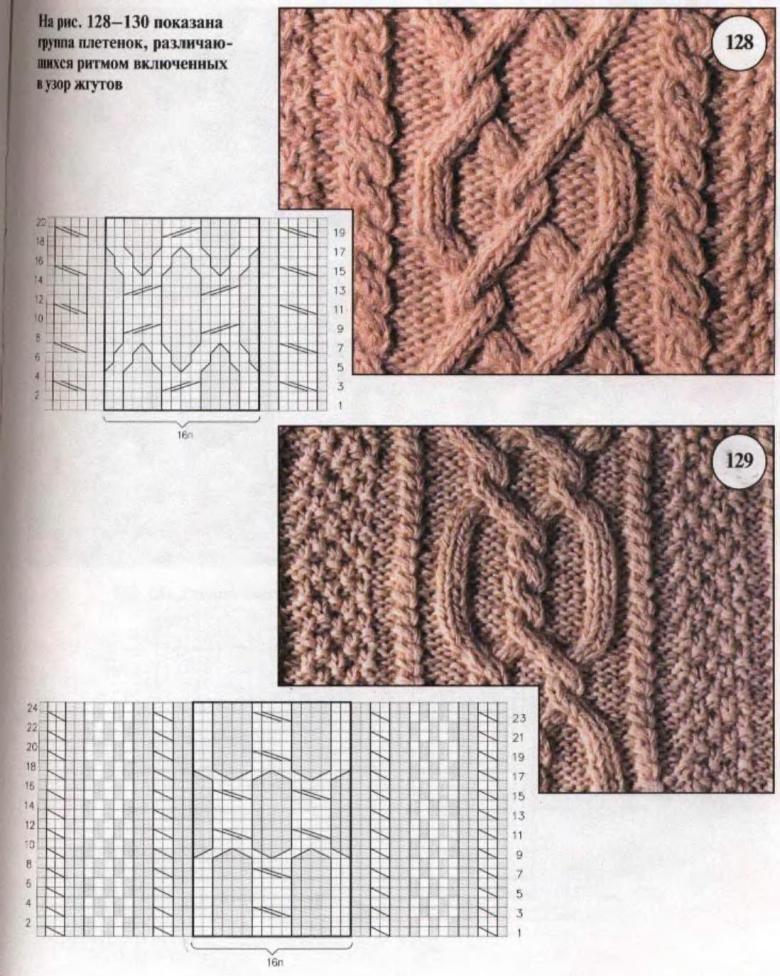
Description:
- 1st row - 3 i's, crossed over (to be done behind the back yarn), 8 i's, 3x3 crossed over with the unbroken loops transferred to the wrong side, 2 i's, 1 crossed over to the right side.
- The 2nd and all the even-numbered rows are made in the figure.
- 3rd - 2 ea, 1 crossed left, 6 ea. One stitch transferred to additional spokes, left from the back of the fabric, 3 Ls. Loops are moved back. They have to be knit on the wrong side. Take off 3 more sts to an extra needle or pin and leave in front of work, 2 sts, bring them back and leave them in front, 1 st, 1 cross face.
- 5-th - 2 sided, 1 cross face, 4 sided, 2 sts should be put on a pin, leave behind work, 3 sts. Unsewn stitches are returned, knit them to the right, 3 and., 3 l., 1 and, 1 cross.ob.
- 7th - 2 sevens, 1 crossed persons, 2 sevens, 2 sts put on an additional spokes for the cloth, make 3 l., return the loops, and then knit them to the right. After them, make 4 sevens. Removed a stitch without knitting, leave behind work. Make 3 l. Transfer back, on the main spokes previously uncrossed, and then knit to the right, 1 s, 1cross face.
- 9th - 2 round, 1 cross right, 1 hand, 1 st to be removed without knitting, put behind the workpiece, 3 faces, return to the main spokes and knit on the wrong side, 4 round, 2 st to be removed without knitting, place it behind the work, 3 faces. Return the unconsecrated ones, turn them to the wrong side, 2 sleeves, 1 slices.
- 11th - 2 sided, 1 crosswise, 1 sided, 3 sided, 3 sided, 2 sided, leave behind knitting, 3 sided. Put back on the main needle, the deferred fragment, and knit by the knits, 4 sleeves, 1 crossed, and 1 sleeves.
- 13th - 2 round, 1 crossed, persons, 1 rn, 3 to the pin on the outside of the cloth, 1 rn, carry back the deferred stitches, and solder them to the right. Take off 2 sts on the pin on the inside of the cloth, 3 faces, return to the spit and knit on the wrong side, 6 isms, 1 crossed. persons.
- 15th - 2 sevens, 1 cross.ob., 2 sevens, crossing 3x3 with a transfer behind the cloth, 8 sevens, 1cross.ob.
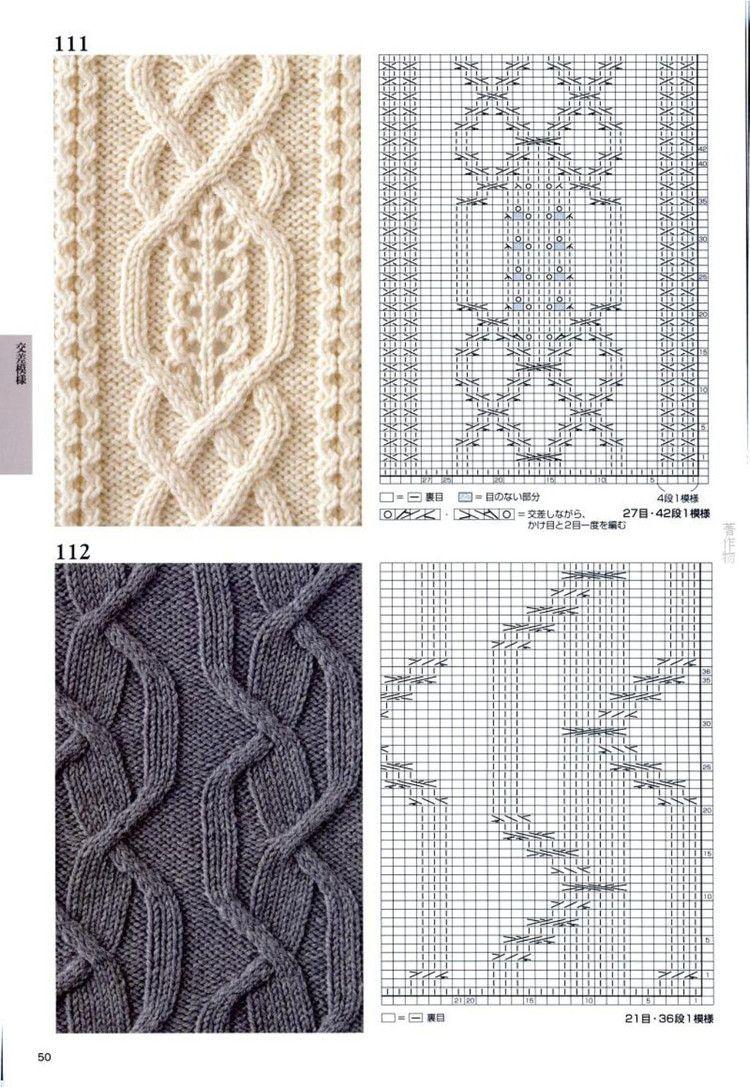
The first part of the aran is ready. But it consists of two repeating rings. They are opposite, identical at the same time. Figuring out the rules of any ornament, you can add to it or write a completely new one, invent your own pattern.
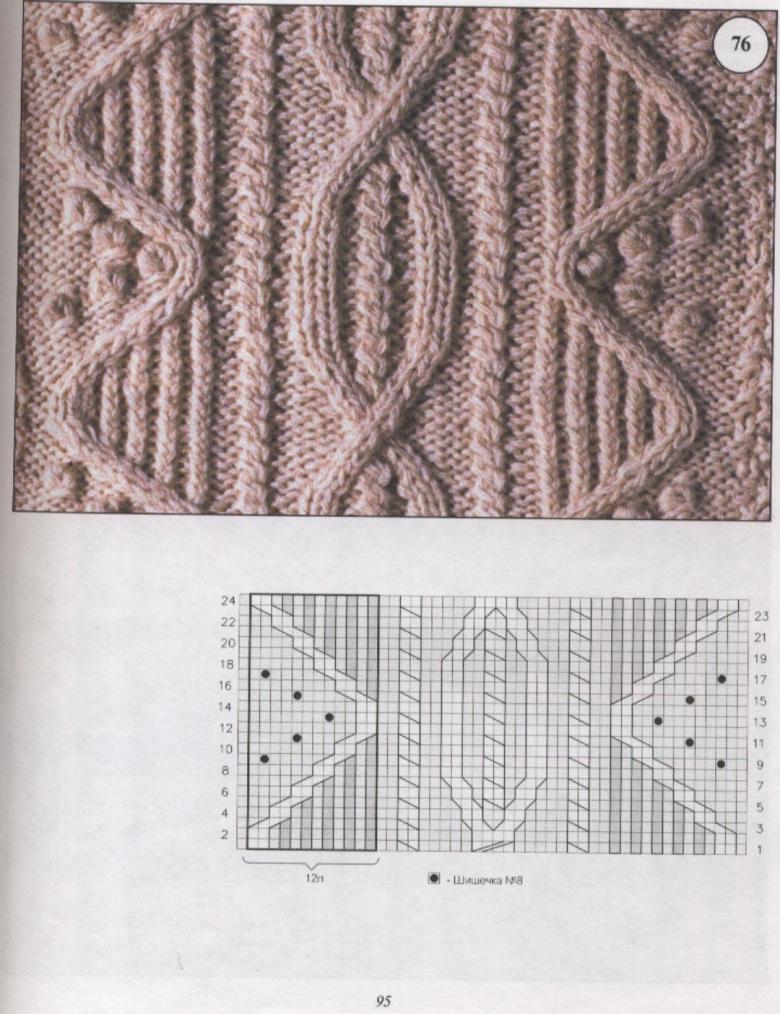
To do this, it is enough to change the angle of the threads of the braids. They may resemble a sea octopus, coral, lightning, a polar star or a necklace from a treasure chest, a pirate map, ship drawings.

Knit aran further according to this scheme:
- Row 17 - 2 on, 1 crossed, 1 off, 1 st is taken on the third spokes behind the piece. Followed by 3 persons. Transfer back the loop left behind the cloth, and knit it on the wrong side. After that, you need to put another 3 sts. before the piece, knit 2 in., return them and knit them to the right, and then make six sleeves to the wrong.
- 19th - 2 sleeves, followed by 1 crossed, 1 sleeves, 3 sleeves, 3 sts transferred to the pin outside the piece, 2 sleeves, return to the spit, knit 3 sleeves, 4 sleeves, 1 crossed sleeves from them.
- 21st - 2 in., 1 crossed, 1 in., 3 put back on the extra needle outside the piece. Knit 1 out. Return the stitches, make them 3 faces, knit 4 out. Again 3 stitches are to be moved to the third spokes, placing them on the outside of the piece. 2 sleeves are knitted, put them back on the main needle, make them face, 2 sleeves, 1 crossed sleeves.
- 23rd - 2 sevens, 1 crossed persons, 1 rn, 3 stitches removed on a pin, left outside the product, 2 sevens, put them on a needle again, make them obverse, 4 sevens. 3 more stitches transferred to the pin, leave the outside of the fabric. This is followed by 1 rn. Return the stitches on the needle, knit them to the right, 1 rn, 1 crossed persons.
- 25th - 2 twists, 1 cross face, 4 twists, 3 stitches set aside outside the product, 2 twists, return them to the main needle to sell them as faces, 3 twists, 3 faces, 1 contra, 1 cross face.
- 27th - 2 sevens, 2 crosses. persons, 6 sevens, 3 sts. put on a pin on the outside of the detail, knit 2 sevens, return the previously displaced stitches, and then knit them to the right. Put one from the inside on a spare needle, 3 faces, return and knit 1 right, 1 wrong, 1 crossed right.
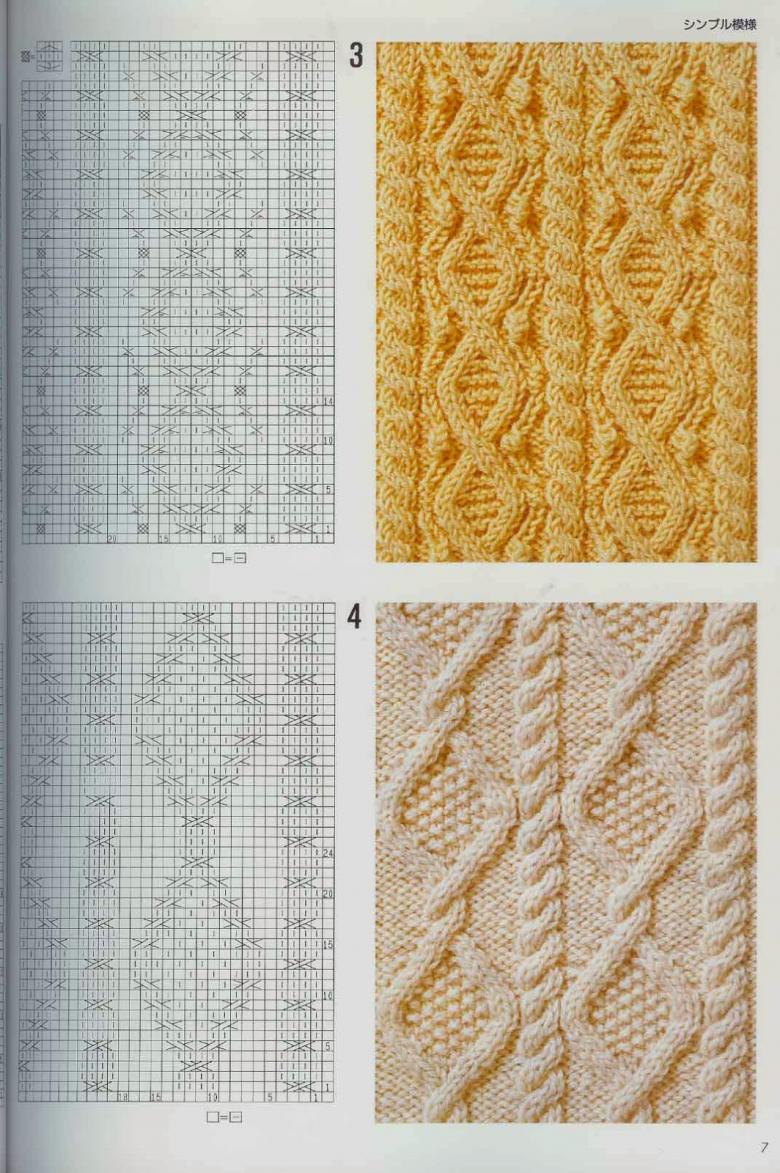
A great variety of braids with asymmetrical strips, the threads from which they are twisted, with rhombuses, cones, leaves, hearts and other elements allows you to always choose the most appropriate ornament.
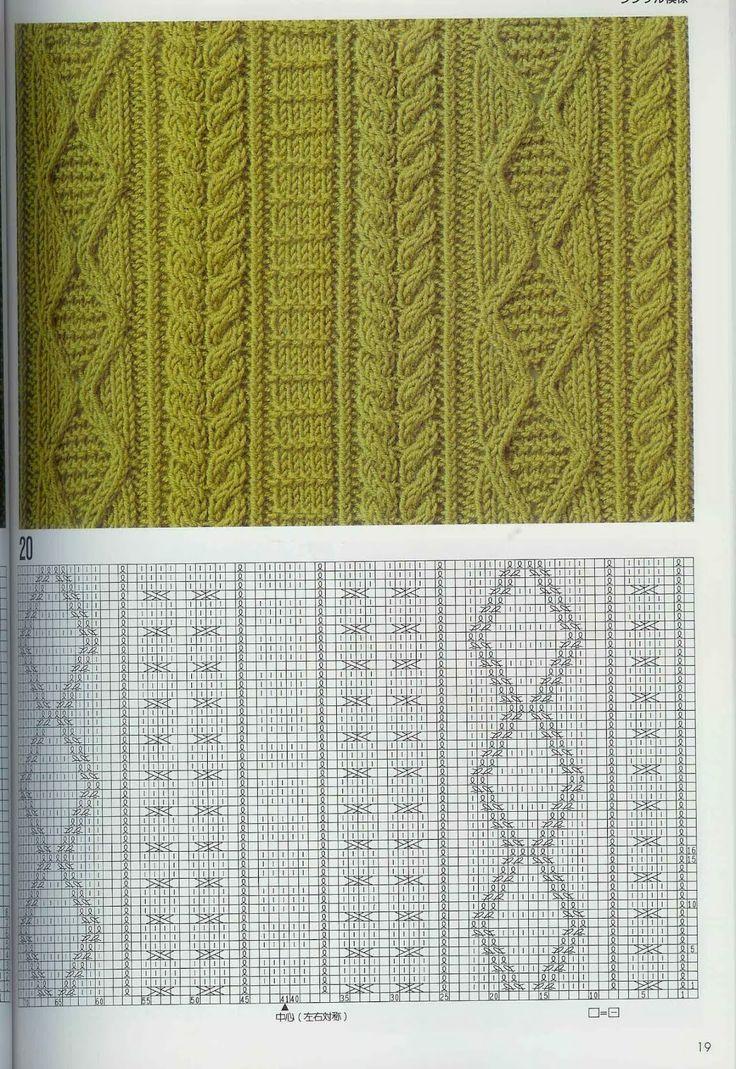
A selection of the best patterns, the most spectacular - what you need to create a unique scarf, sweater, vest right now. Relief aranas, invented by fishermen, can safely be counted among the basic techniques.

